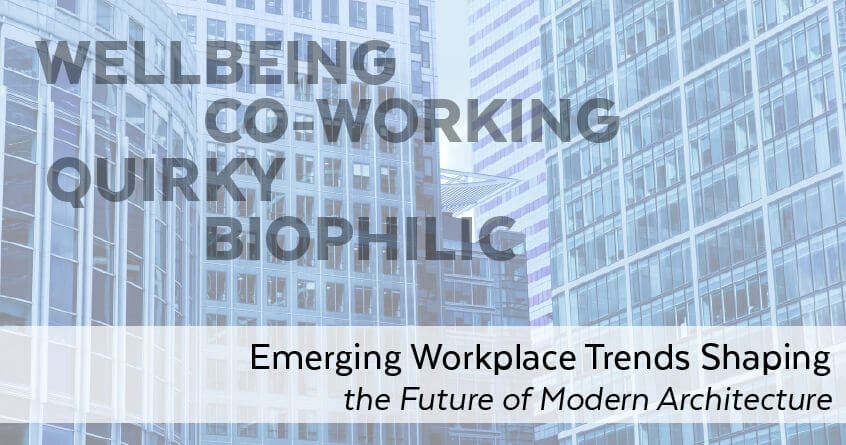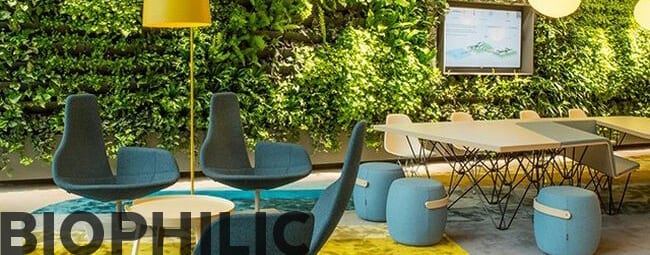Office design has never been more fundamental to the success of a business. The constant change that new technologies bring to the workplace has opened unparalleled opportunities for design innovation and experimentation. This current trend toward office optimization is forecast to increase in 2019 and beyond.
The needs and expectations for a work environment are quite different from those in the past. One of the newest and most important trends is something termed “wellbeing.”
Wellbeing In the Workplace
Employee wellbeing is an important consideration when planning and designing a modern office. Today’s research is proving that a “well” workplace is a healthy workplace–and happy, healthy employees add to the bottom line.
The design of a workplace should include the following elements:
- Color: Research shows that the right colors can positively contribute to happiness, productivity and even physical health (eg. yellow can evoke feelings of optimism, warmth, and creativity).
- Texture: Adding texture to office brings warmth and appeal–and elevates the “humanity” of the space (eg. a variety of fabrics, patterns, artwork, pillows, rugs, sculpture pieces, etc. can create comfort and interest to the work environment).
- Air Quality: A rise in carbon dioxide or other noxious gases can cause loss of concentration, low productivity, and even serious health concerns for employees.
- Lighting: Power over Ethernet (PoE) and LED lighting systems enable buildings to interact directly (in real time) with end users and the environment. (eg. lighting that mimics sunlight and changes in time/season allows bio rhythms to be maintained–and can create indoor comfort conditions to suit individual employee preferences).
- Ergonomics: This is the science of designing products for the workplace that are optimized for human use (eg. specially engineered chairs that fit individual needs or desking systems that allow employees to stand and work rather than sit all day).
- Experience-Driven Spaces: These spaces are employee-focused enhancements in the workplace that help develop employee wellness, happiness, morale, and sense of community (eg. a massage therapy service, chiropractic facility, meditation area, walking/jogging trail, rock climbing wall, espresso bar, and the like).
Employee recruiting and retention is a critical goal in today’s business world. Therefore, a workplace design with wellness features is something top-notch employees are looking for. And, simply, it’s the right thing to do.
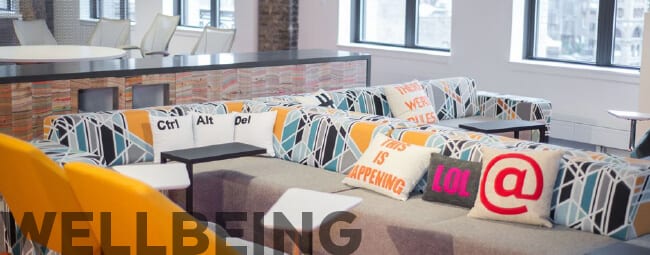
Another emerging trend in 2019 is extending the use of co-working spaces.
Co-working Spaces
In the past, the various enterprises sharing a co-working environment have remained separate and closed off from one another. However, in newer cohabitation spaces, walls are being torn down and companies are sharing spaces, resources, and, sometimes, even personnel.
These companies all share similar goals (maximization of collaboration, creativity, flexibility, innovation) and are especially designed to attract millennials.
Free-range office spaces are often characterized by:
- Open plan office design
- Multi-use meeting areas
- Technology resource spaces
- Unconventional creative spaces
- Lots of glass
- Plants and greenery
- Portable green wall dividers
- Lightweight, mobile furniture
- No cubicles
- Comfortable couches and chairs
- Coffee/espresso bars
Cohabitation spaces provide options for companies to acquire space without having to commit to long-term leases; they also encourage landlords to re-work space (flexibility) and provide for shared amenity areas within the building.
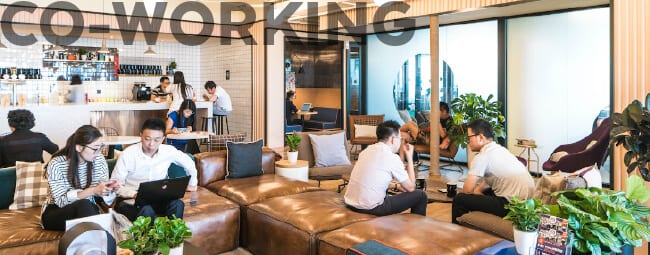
Another popular thing is “old becomes new again.”
Quirky Buildings and Interiors
This isn’t a new phenomenon but bringing a historical old building back to life or repairing a broken-down warehouse is a popular direction these days. New business parks in areas such as old fishing yards, meatpacking districts, deserted manufacturing plants, and abandoned waterfront areas are giving these spaces a new lease on life.
Old, honored craftsmanship meets with new, modern furniture and decor–the best of both worlds. This “old becomes new again” design trend features:
- Old-world craftsmanship
- Modern design accents
- Antique/weathered textures
- Smooth/soft textures
- Glass and metals
- Carpet and wall coverings with abstract designs
- Modern furniture and office equipment
This design trend allows for an “aged” feeling with quirky choices of color, texture and decor that is modern. Contrast is important: old vs. new, hard vs. soft; homey vs. industrial.
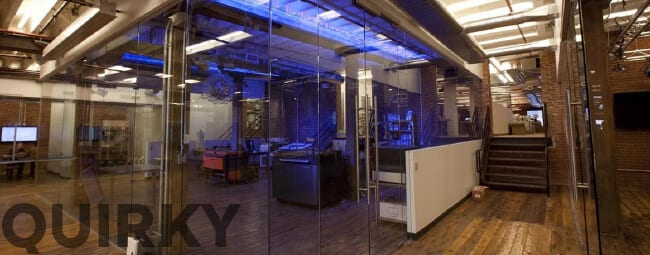
In contrast to this old versus new approach to design, biophilic design enjoys huge popularity these days and is becoming a near necessity.
What is biophilic design?
Biophilic design is an extension of the philosophy of “biophilia” (part of the green movement) and is defined as “the inherent human inclination to affiliate with nature.”
This design trend is noted for the following features:
- Environmental Features: Color, water, air, sunlight, plants, animals, and natural materials are built into the environment.
- Natural Shapes and Forms: These buildings often have botanical, animal, or shell motifs. Simulation of natural shapes, such as arches, vaults, and domes are part of the architecture.
- Natural Patterns: These spaces have varying sensory experiences: play between balance and tension, rhythm, ratios, and use of scale. Contrasts are important.
- Light and Space: Humans react to differing types of light and space in a variety of ways. These spaces offer warm light, cool light, diffused light, and even dark. There’s a harmonious relationship with the outside (eg. large glass windows bring in light, trees, and other landscape into the building).
- Place-Based Relationships: Historic, cultural, geographic, spiritual, and ecological factors are respected and honored in the design of the building.
The basic principle of this popular design philosophy is to incorporate feeling-based concepts, such as order and complexity; curiosity and enticement; mastery and control; affection and attachment; security and protection; exploration and discovery, even fear and awe.
Environment Diversity: The Better Way
In workplace design for 2019 and for the future, the push tends toward creativity and humanity. Offices now have “personalities” and wear the spirit and the culture of the company.
The user experience is at present a critical factor in workplace design. Gone are the days of the draconian office that takes no heed to the needs of its inhabitants. The current drive and interest is toward meeting the needs of the people who spend most of their waking hours in a workspace.

